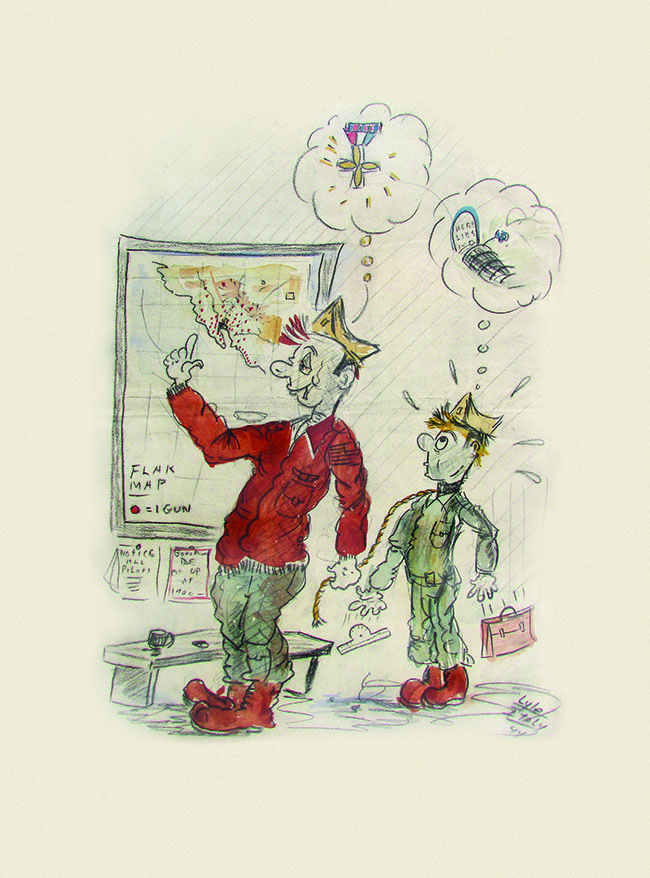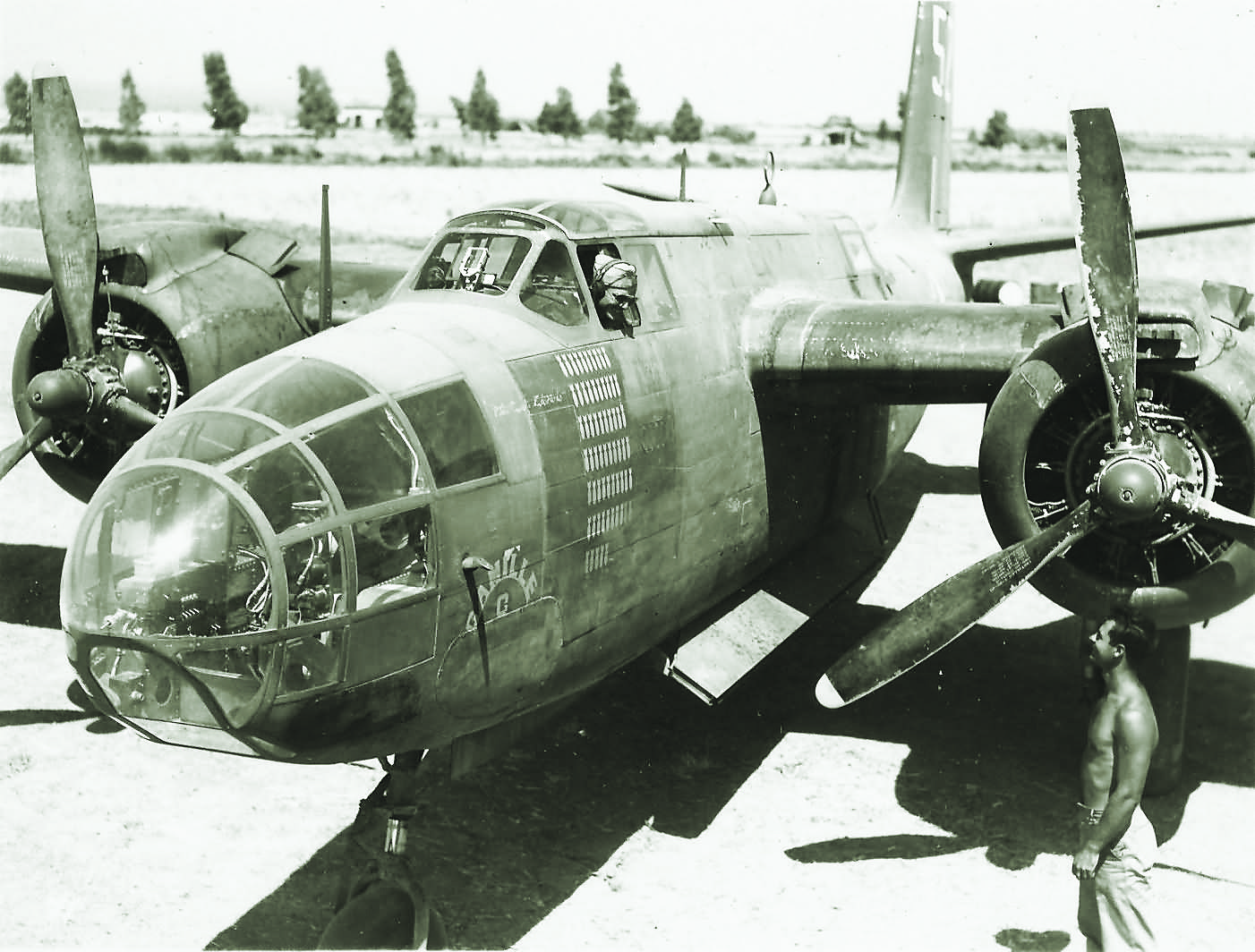I recently obtained a drawing from an estate sale; the artist signed it “Lyle Italy 44.” It is approximately 19 inches high and 13 wide. I would appreciate any information you can provide. —Barton Powell, Roseville, California

Unfortunately, I wasn’t able to figure out who “Lyle” is, but my guess is that he was a reluctant bombardier/navigator in an A-20B Havoc light bomber. In the drawing, a gung-ho pilot at an officer’s briefing, volunteering for a mission over Italy and thinking of glory, has roped-in the only other officer in his crew on this endeavor. The tool the worried man is dropping, an air navigation plotter, hints at his role—and that suggests an A-20 to me. It’s the only U.S. Army Air Forces aircraft I can think of that lacked a copilot—that is, a third officer. The A-20 normally had a crew of three or four; pilot, bombardier/navigator, and one or possibly two enlisted gunners.
The map of coastal Italy in the background marked with German flak positions indicates early 1944; around this time, the Twelfth Air Force’s 47th Bombardment Group (Light) operated A-20Bs in support of Allied ground forces at Anzio. The group operated a mix of the two A-20 variants—the standard, light-attack version and the gunship version—to strike bridges, roads, and troop concentrations at low to medium altitude. In Italy, the 47th also conducted “night intruder” missions, where the group’s aircraft sortied at night and operated independently of each other to attack individually assigned targets.
The bombardier/navigator’s station was located in the aircraft’s glazed nose or, when the A-20 was used as a gunship, to the rear of the pilot—the bombardier’s station having been replaced with six forward-firing .50-caliber machine guns. It was dangerous work: this aircraft carried out the types of missions where flak could be expected over the target every single time. —Larry Decuers, Curator, The National World War II Museum ✯





